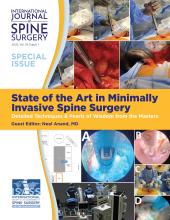ABSTRACT
Background Hospital-acquired venous thromboembolisms (HA-VTE) are a significant source of morbidity and mortality in spine surgery patients. The purpose of this study was to review HA-VTE rates at our institution and evaluate the prevalence of known risk factors in patients who developed HA-VTE among both neurosurgical and orthopedic spine surgeries.
Methods Retrospective chart reviews were conducted of all spine surgery patients from January 1, 2013, to July 31, 2017, to evaluate rates of HA-VTE and prevalence of known HA-VTE risk factors among these patients. Univariate and multivariate logistic regression analysis for categorical variables and independent Student t test for continuous variables were utilized with significance set at P < .05.
Results The overall HA-VTE rate was 0.94% (0.61% orthopedic, 1.87% neurosurgery). Patients with VTEs had higher rates of thoracic procedure (P = .002), posterior approach (P = .001), diagnosis of fracture (P = .013) or flatback syndrome (P = .028), neurosurgery division (P < .001), and diagnosis-related group (DRG) of noncervical malignancy (P = .001). Patients with VTEs had lower rates of cervical procedure (P < .001), diagnosis of herniated nucleus pulposus (P = .006) and degenerative disc disease (P = .001), and DRG of cervical spine fusion (P < .001). In the patients who sustained VTE, the neurosurgical patients had higher rates of active cancer (22.86% vs 0%, P = .004) and age >60 (80% vs 50%, P < .001), and orthopedic patients had higher estimated blood loss (EBL) (2436 ml vs 1176 mL, P = .006) and rates of anterior-posterior surgery (22.58% vs 0%, P = .003). Neurosurgery department, diagnosis of fracture, and DRG of noncervical malignancy were found to be significant independent risks for developing HA-VTE. Cervical procedures were independently associated with significantly lower risk. Postoperative anticoagulation initiated sooner in neurosurgery patients (postoperative day 1.26 vs 3.19, P < .001).
Conclusions The overall HA-VTE rate at our institution was 0.94% (0.61% orthopedic, 1.87% neurosurgery). In patients who sustained VTE, neurosurgical patients had higher rates of active cancer and age >60 years, and orthopedic patients had higher EBL and rates of anterior-posterior surgery. This highlights the different patient populations between the 2 departments and the need for individualized thromboprophylaxis regimens.
Level of Evidence 4.
Footnotes
Disclosures and COI: Each institution obtained approval from its local institutional review board to enroll patients in the prospective database, and informed consent was obtained from each patient.
- ©International Society for the Advancement of Spine Surgery







